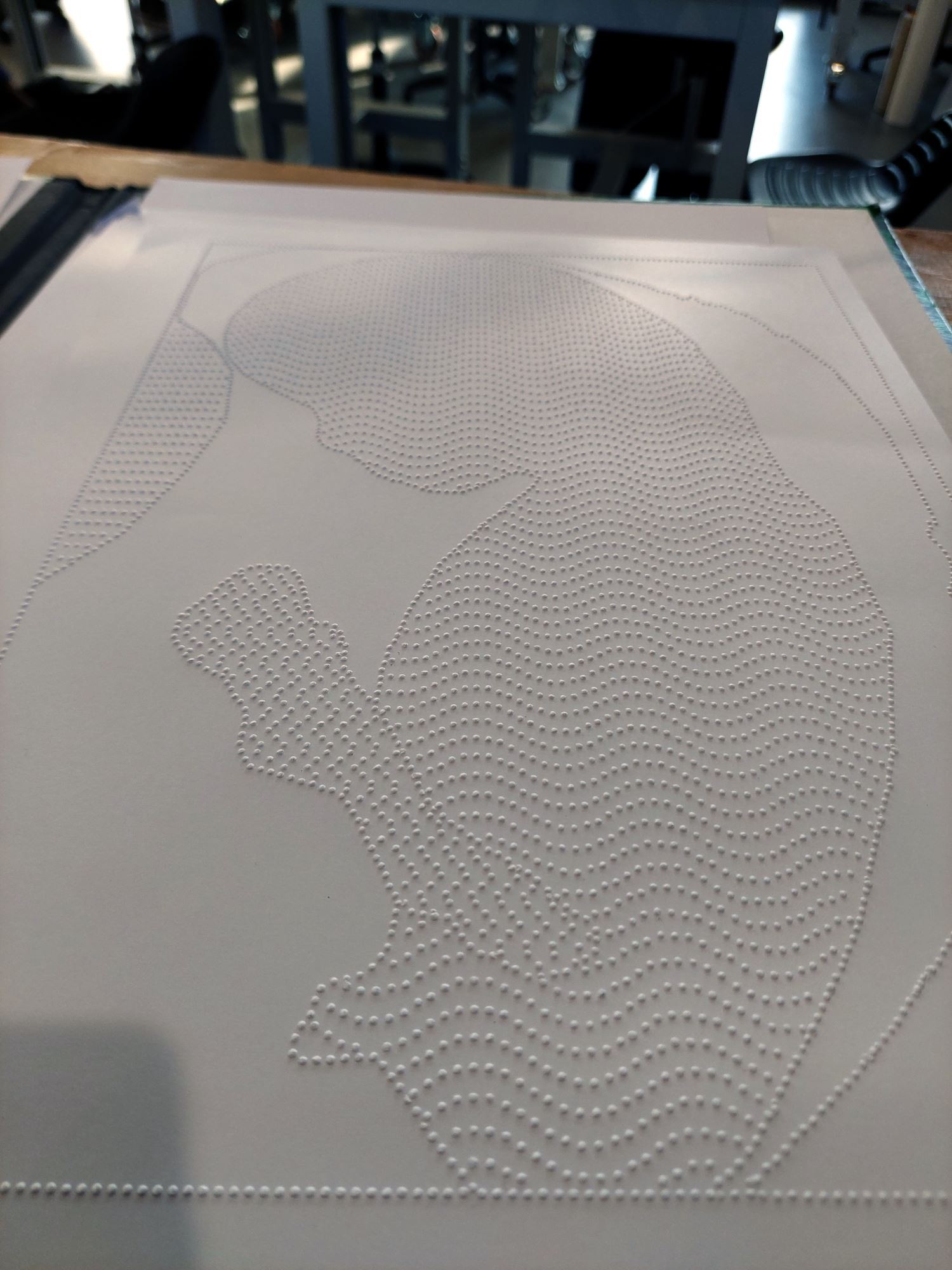As i mentioned earlier we now have a reliable device to emboss Braille
- BrailleRAP is able to use any material sheet that fit in A4 size (210x297 mm).
- BrailleRAP XL is able to use any material sheet that fit in A3 size (297x420mm).
As any material we have successfully tested paper, plastic, sticker, thin metal, postcard ... At least you can test anything that fit in the device.
Having a device without software to use it, is like having nothing. BrailleRAP understand GCODE, but you don't want to write GCODE to emboss Braille characters.
AccessBrailleRAP
AccessBrailleRAP, is a specialized software to translate text in in Braille. It can open existing text file and thanks to pandoc, you can also use open office documents and any file format readable by pandoc. The text is translated in Braille and paginated so you can choose the page you want to print. AccessBraillleRAP is NVDA compatible, and usable by unsighted peoples.
DesktopBrailleRAP
DesktopBrailleRAP, is a software to compose page presentation with Braille and vector graphics. You can use it to annotated in Braille a geographic map, a biology schematics, architectural drawing ...

Humanlab INRIA as even tested DesktopBrailleRAP with post treated ultrasound images.

So what's next. Of course improving existing softwares and devices, easier to build, more features and more accessible. Improving documentation is also a subject, makers from all over the world had successfully replicated the device so the building documentation is not so bad, but we can improve it.
What we have done in recents weeks is documenting workshop where BrailleRAP is not the goal but the subject. While writing the software for pattern features in DesktopBrailleRAP, i was wondering what is a good pattern to figure colors. We had already made some tests with patterns, and we already knew that filling figure with tangible pattern is a good way to have more rich tangibles documents. But we wanted to have a better understanding of the way unsighted people feel tangible documents and if using patterns is efficient to enhance this feeling. So with My Human Kit we design a workshop and run it with local unsighted non profit organisation. The workshop plan is available here https://github.com/braillerap/DesktopBrailleRAP/wiki/Pattern-filling-test-%E2%80%90-the-method and the run result is available here https://github.com/braillerap/DesktopBrailleRAP/wiki/pattern-test-workshop-2024-11-20. During the workshop, we learn a lot of about building tangible documents for unsighted people, what is usable, what is comfortable and of course what is not usable. Documenting a project is usual, but documenting the way we use the device is a good way to indicate what it can be used for.
 Stephane
Stephane
Discussions
Become a Hackaday.io Member
Create an account to leave a comment. Already have an account? Log In.